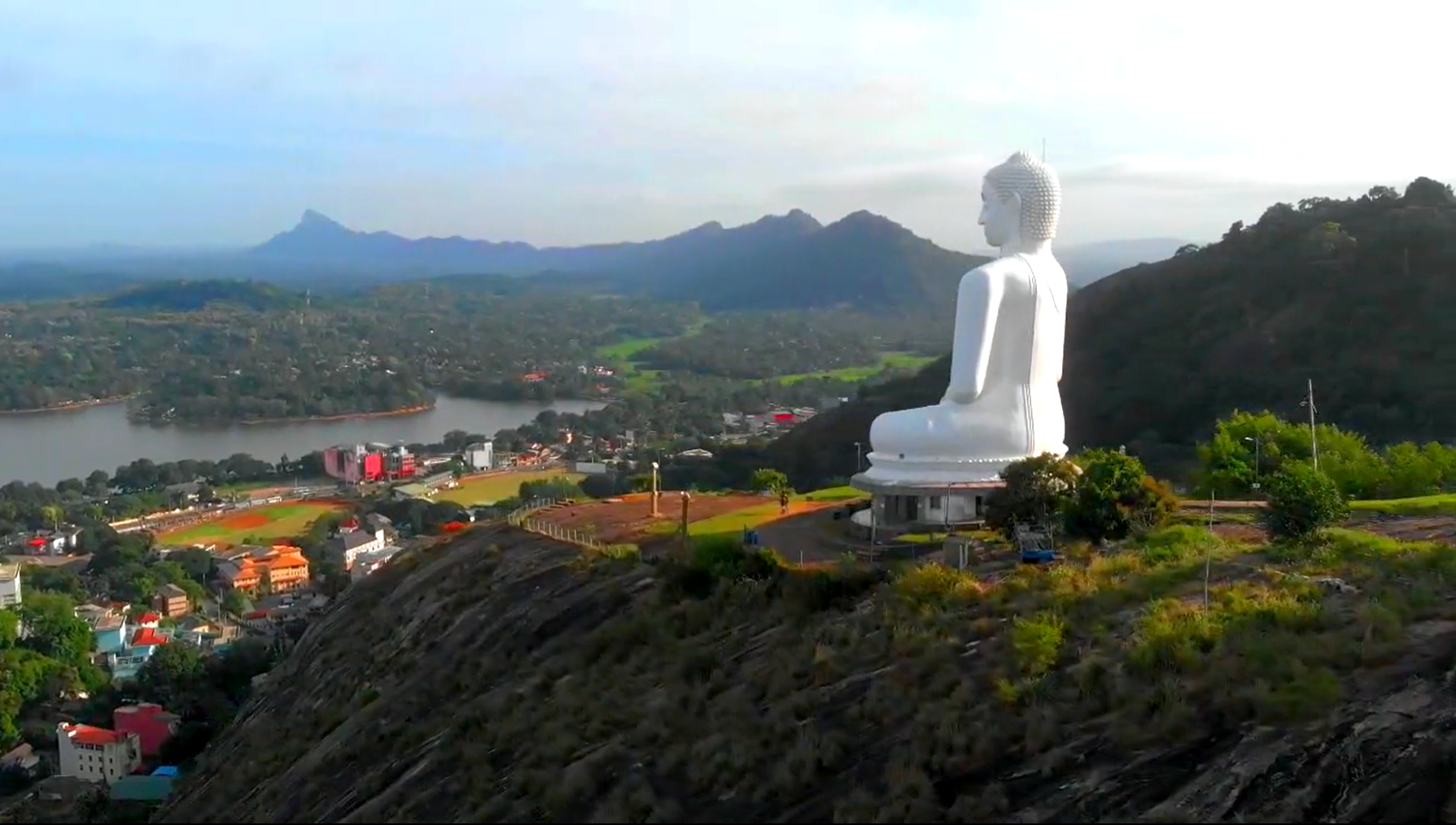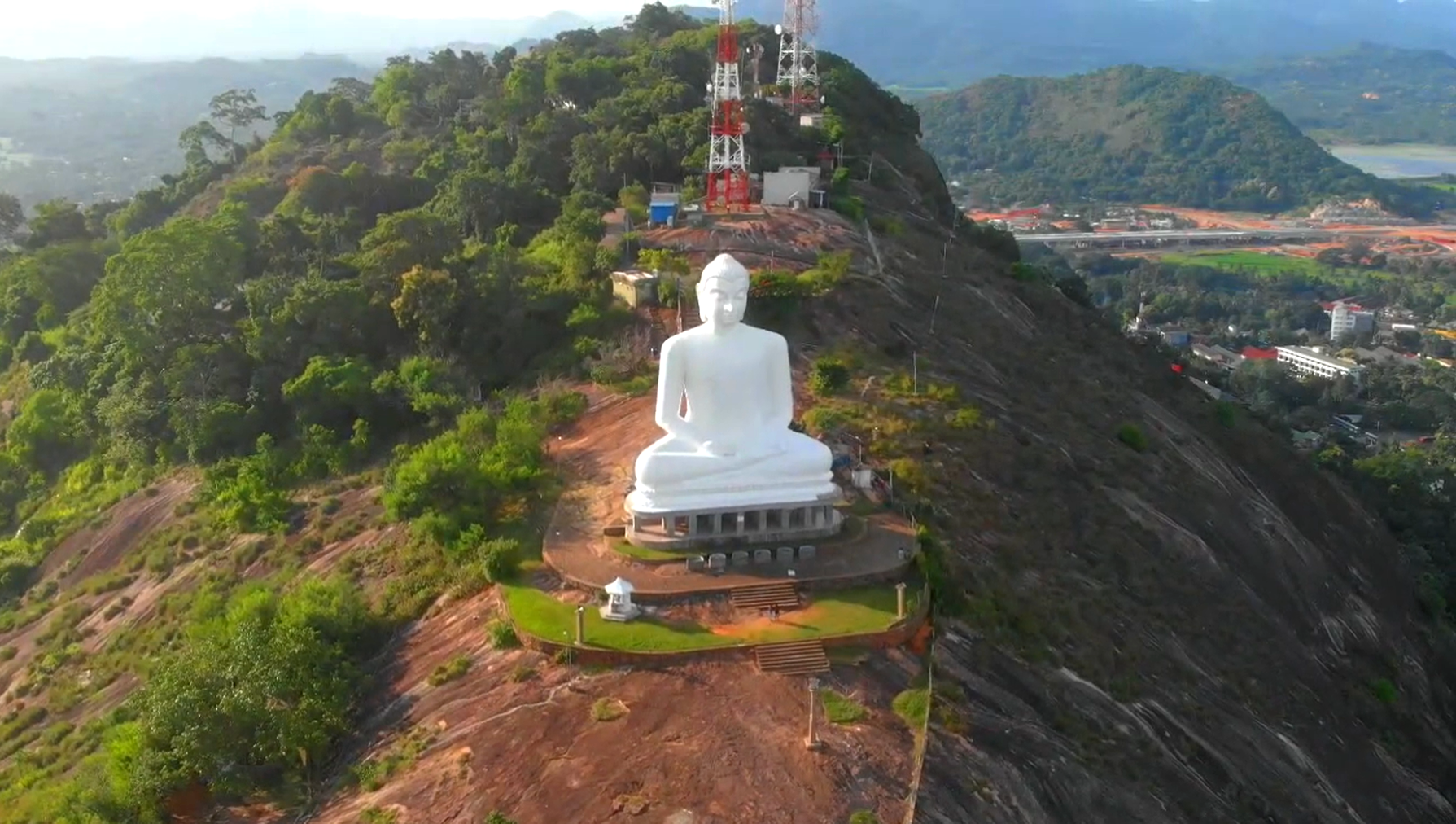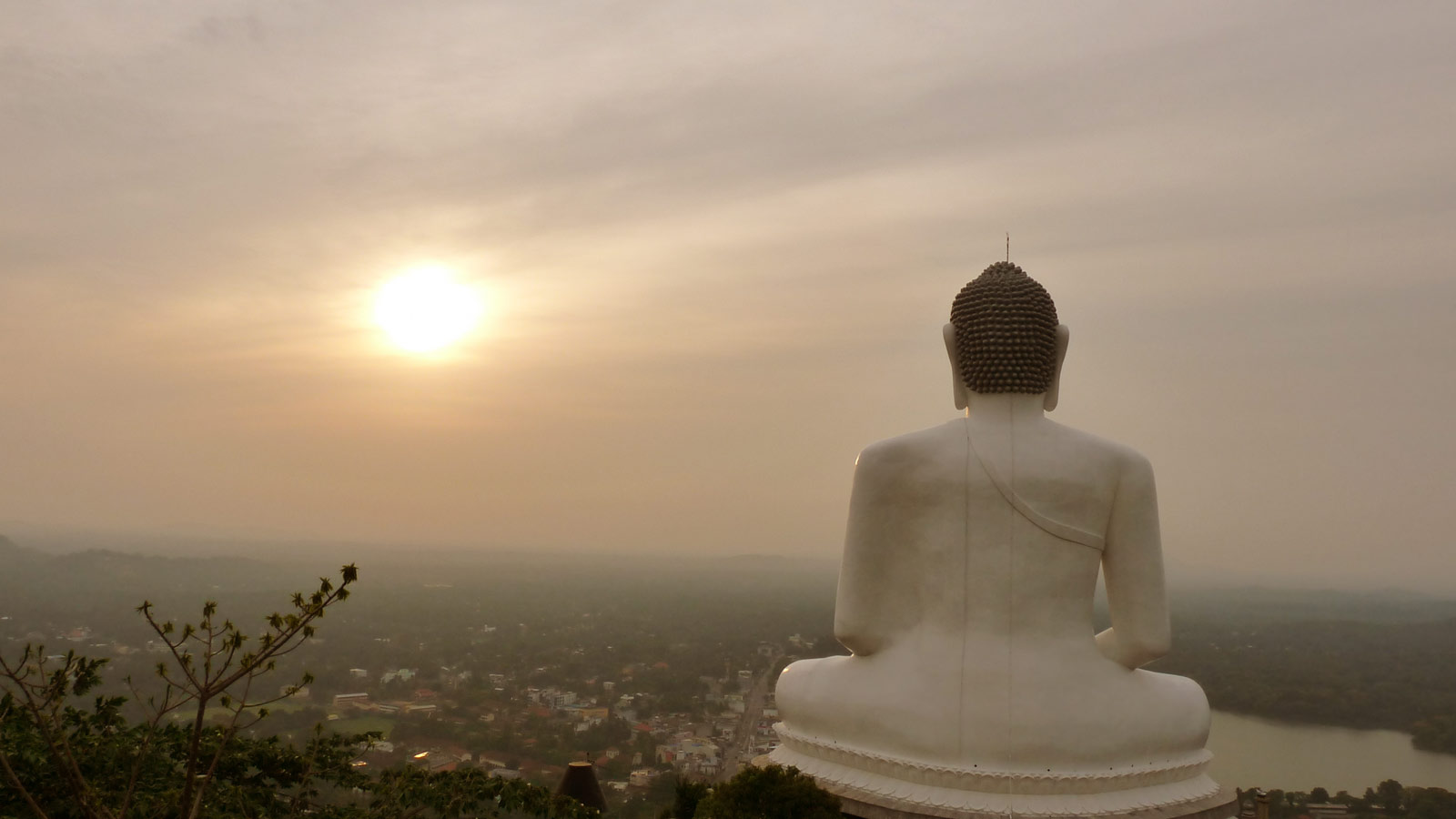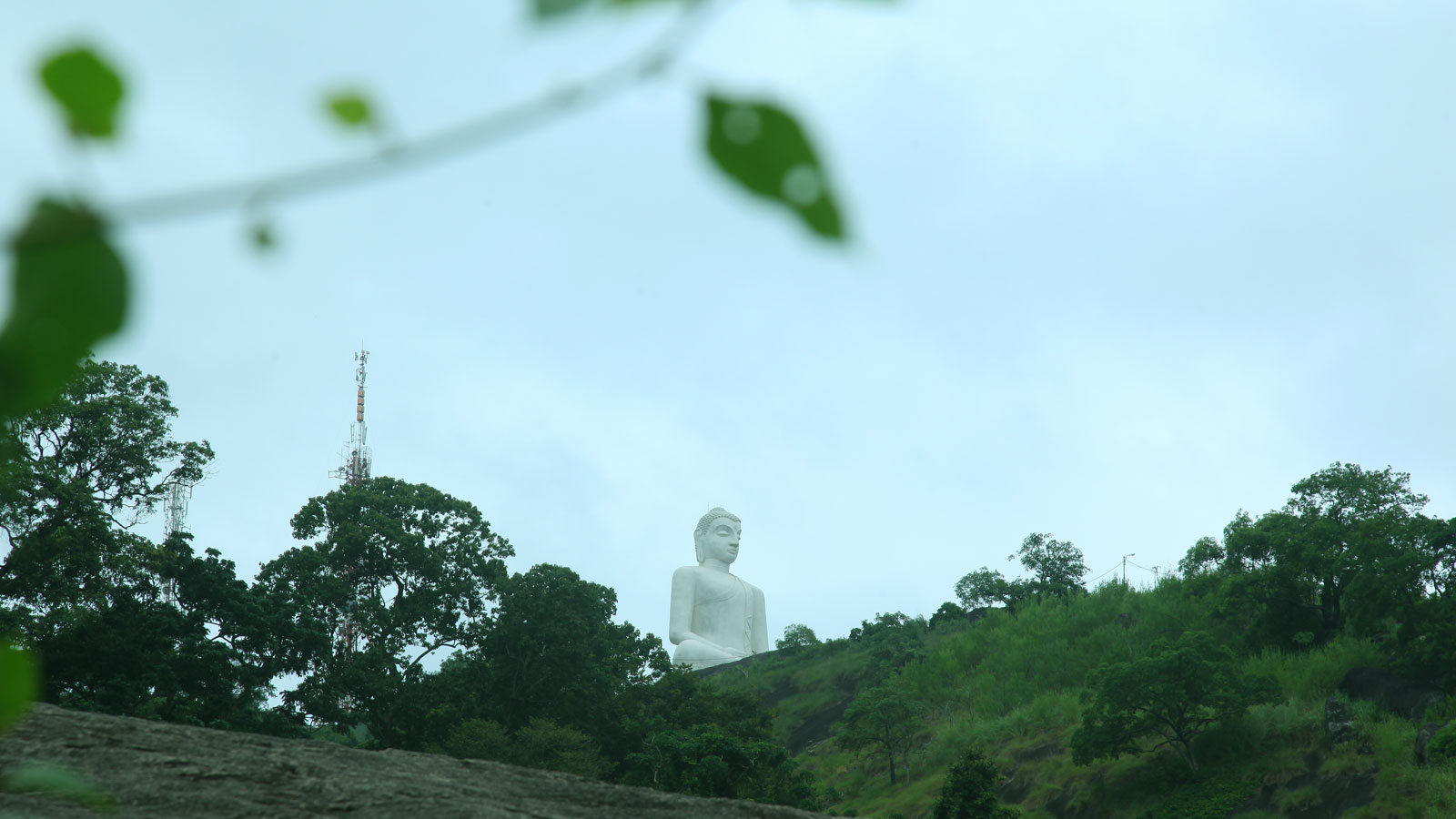About Buddha Statue
-

About
This statue is located on the Ethagala rock(height 1100 feet) in the heart of Kurunegala City, Kurunegala District in the North Western Province or Wayamba, traditionally called Sathkorale. The city is encircled by a series of rocks namely Athagala, Ibbagala, Andagala, Kuruminiyagala etc., the most prominent being Athagala, this rock bearing a resemblance to a majestic elephant, hence the names Athagala or Hasthisailapura. Kurunegala has the third highest population of the 22 districts with 1.58 million of which 91.2% are Buddhists(census 2012). It is 93 km from Colombo and has direct roads to Kandy 42 km, Puttalam 87 km, Dambulla 55 km and Negombo 75 km. A large volume of traffic from Colombo proceeding to Jaffna, Trincomalee, Batticaloa, Anuradhapura and Polonnaruwa pass through the city and the statue which is a symbol of Kurunegala is visible to all. Sathkorale had been inhabited from the earliest times as proved by Pre-Christian rock inscriptions in many parts of the district. The people were engaged in paddy cultivation and the largest number of small irrigation tanks are found here. Coconut is another important crop and Kurunegala is one apex of the coconut triangle. Sathkorale came into prominence in the 12th to 14th centuries as 4 capitals were located here. Parakramabahu ruled as sub king at Panduwasnuwara in Dakkinadesa before ascending the throne at Polonnaruwa in 1153. The world’s first peace treaty between him and king Gajabahu II of Polonnaruwa carved on a rock can be seen near Gokarella, about 15 km from Kurunegala. When Rajarata was being devastated by the invading Magha of Kalinga, his advance to the south was halted by the leaders of Sathkorale. The kingdom of Dambadeniya was established by Vijayabahu III in 1232. His son Parakramabahu II(1236-1270) restored temples, improved the living standards of the people and ushered in Sinhala literature. His forces expelled Magha and his army from the country. King Buwanaikabahu I (1272-1284) of Yapahuwa built an exquisitively carved stone Temple of the Tooth and engaged in diplomatic relations with foreign countries, even sending an ambassador to the Caliph of Egypt. King Parakramabahu IV (1302-1326) contributed much to Sinhala literature. The kings who succeeded him ruled until 1326 after which the capital moved to Gampola.
-

History
During the Anuradhapura and Polonnaruwa eras, when there were long periods of peace and prosperity, large Dagobas and Buddha Statues of immence proportions were built. However during the Dambadeniya- Yapahuwa-Kurunegala eras no such monuments were erected. This is because the kings were preoccupied with protecting and fortifying their citadels and restoring the agricultural and cultural needs of the people.
-

Starting the Statue
In order to fill this gap, a group of Buddhists of the 20th century decided to build a large Buddha Statue in a prominent place, being the Athagala rock.The initial effort to begin the project in 1965 by some high ranking public servants had to be abandoned due to opposition by vested interests.A new society was formed in 1995, and overcoming obstacles proceeded with the task until one acre of the rock surface was granted to the society by the then President of Sri Lanka, Her Excellency Chandrika Bandaranayaike Kumaratunga in June 1997. A highly competent engineer and a sculptor were selected, fund raising initiated and work commenced on 18/12/2001.
-

Opening the Statue
The statue made with quality bricks and concrete had spaces within for a shrine room, an area for deposition of nidam vastu and one for Sacred Buddha relics. Workmen on the scaffolding faced adverse weather conditions at times but continued working without problems or mishaps. At ground level teams of shramadana workers – school children, villagers, town folk, Police and Army personnel took on a huge load of the work. Religious ceremonies were conducted by the Mahasangha at every stage of the construction. The Atamasthanadhipathy Nayaka Thero of Anuradhapura presented a sapling of the Sacred Bo Tree which was planted at a suitable site close to the statue on 31.3.2012 A ceremony marking the completion of the statue and handing over to the Buddha Sasana and the public in the presence of the Mahanayaka Theros and other members of the Maha Sangha, religious dignitaries from all faiths and a large crowd of people from all walks of life was held on 6th October 2003.
-

A
26 May 2018Nam vel egestas nisi. Nullam lobortis magna at enim venenatis luctus. Nam finibus, mauris eu dictum iaculis, dolor tortor cursus quam, in volutpat augue lectus sed magna. Integer mollis lorem quis ipsum maximus finibus.
-

B
22 May 2018Nam vel egestas nisi. Nullam lobortis magna at enim venenatis luctus. Nam finibus, mauris eu dictum iaculis, dolor tortor cursus quam, in volutpat augue lectus sed magna. Integer mollis lorem quis ipsum maximus finibus.
-

C
8 May 2018Nam vel egestas nisi. Nullam lobortis magna at enim venenatis luctus. Nam finibus, mauris eu dictum iaculis, dolor tortor cursus quam, in volutpat augue lectus sed magna. Integer mollis lorem quis ipsum maximus finibus.
-

A Staircase
There had been narrow steps leading to the top of the rock dating from historical times. These were totally inadequate considering the large crowds of pilgrims visiting the statue regularly. Therefore broad new steps using modern machinery were cut enabling a large number of pilgrims to visit the site. Over 400 steps were made, each costing Rs.3500-4000.
-

Lighting
A bridge made of concrete was constructed at the approach pathway to the steps. Metal railings for the steps. Electric lights illuminating the steps. Though outside our area, street lights for the 1 ½ km road constructed at our request by the relevant ministry.
-

Other
Retaining wall for the area around the Bo Tree. A water supply scheme to pump water from the ‘sump’ to the storage tank at the site. and Repainting.Visitors, foreign and local, have expressed deep appreciation regarding the statue itself, the serene atmosphere prevailing around and the unique location with a panoramic view of the entire area.
Gallery
News
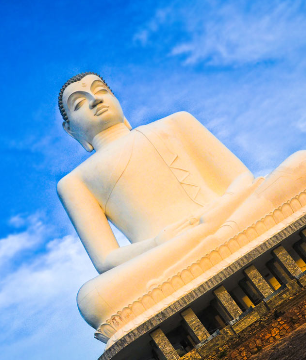
ABOUT
This statue is located on the Ethagala rock(height 1100 feet) in the heart of Kurunegala City, Kurunegala District in the North Western Province or Wayamba, traditionally called Sathkorale. The city is encircled by a series of rocks namely Athagala, Ibbagala, Andagala, Kuruminiyagala etc., the most prominent being Athagala, this rock bearing a resemblance to a majestic elephant, hence the names Athagala or Hasthisailapura..
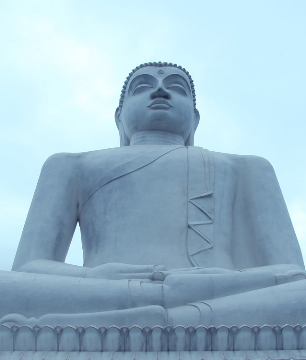
SAMADHI BUDDHA STATUE
Kurunegala has the third highest population of the 22 districts with 1.58 million of which 91.2% are Buddhists(census 2012). It is 93 km from Colombo and has direct roads to Kandy 42 km, Puttalam 87 km, Dambulla 55 km and Negombo km. A large volume of traffic from Colombo proceeding to Jaffna, Trincomalee, Batticaloa, Anuradhapura and Polonnaruwa pass through the city and the statue which is a symbol of Kurunegala is visible to all.
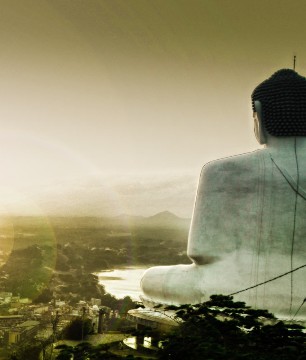
HISTORY
Sathkorale had been inhabited from the earliest times as proved by Pre-Christian rock inscriptions in many parts of the district. The people were engaged in paddy cultivation and the largest number of small irrigation tanks are found here. Coconut is another important crop and Kurunegala is one apex of the coconut triangle. Sathkorale came into prominence in the 12th to 14th centuries as 4 capitals were located here.

Buddha

Buddha

Buddha

Buddha

Buddha

Buddha
Donation
While ample donations were received during construction work,the task of maintaining the statue, raising funds for staff salaries and paying for utilities has been a formidable task. Donations from religious minded persons and other well wishers are most welcome to continue the high standard of service to the public
Hasthishailapura Buduruwa Development Society,
YMBA complex,
17, Rajapihilla Road,
Kurunegala,
Sri Lanka.
BANK ACCOUNTS
Hasthishailapura Buduruwa Development Society
Bank : Bank of Ceylon
Branch : Kurunegala
Acc No : 760154
Map
At Kurunegala District Secretariat(Kachcheri), the approach road is motorable and starts here and ends near the Telecommunication Tower on top of the rock. The statue is a short walk from here. The steps start near the commencement of the tarred road mentioned above. No fees are levied from visitors or pilgrims.


